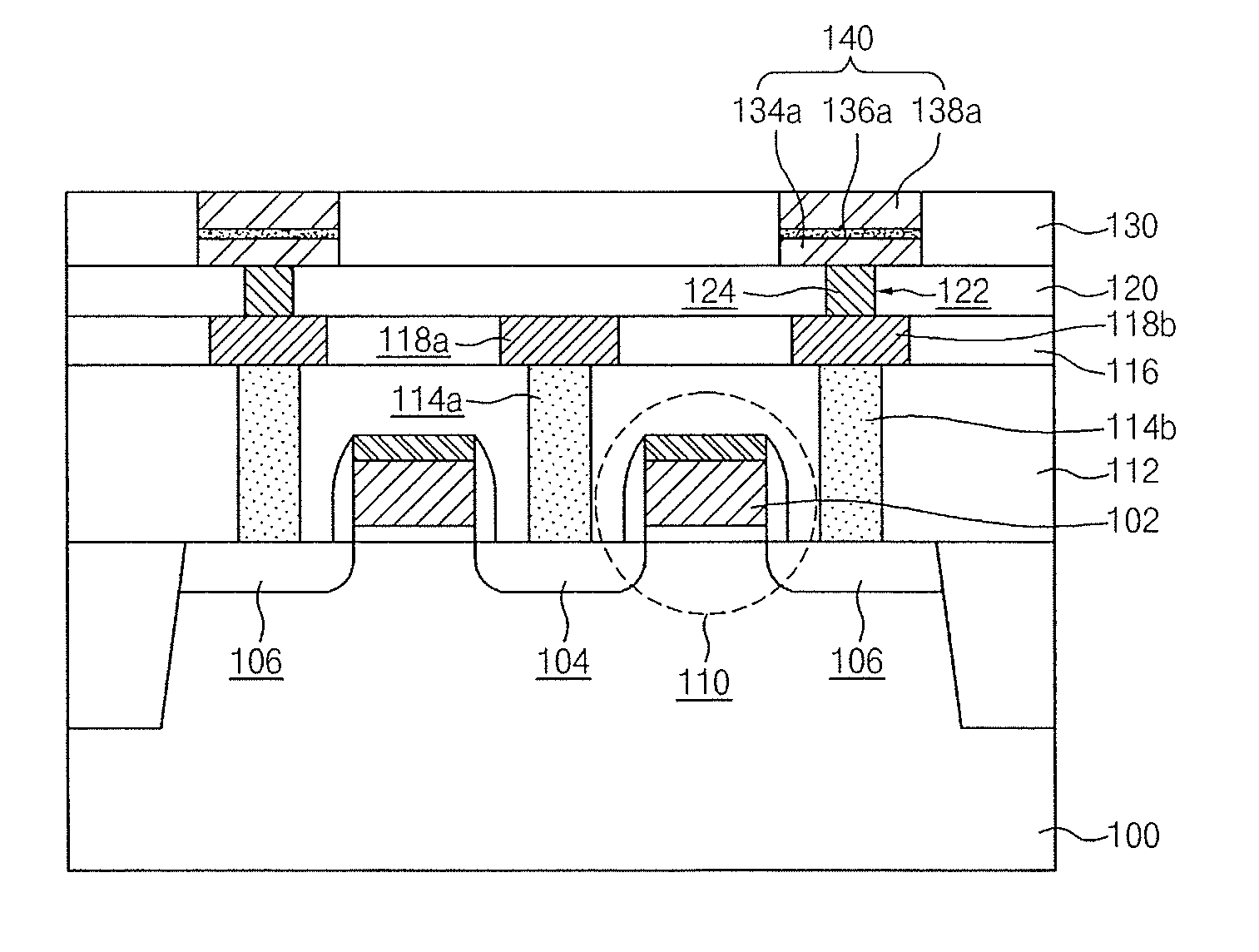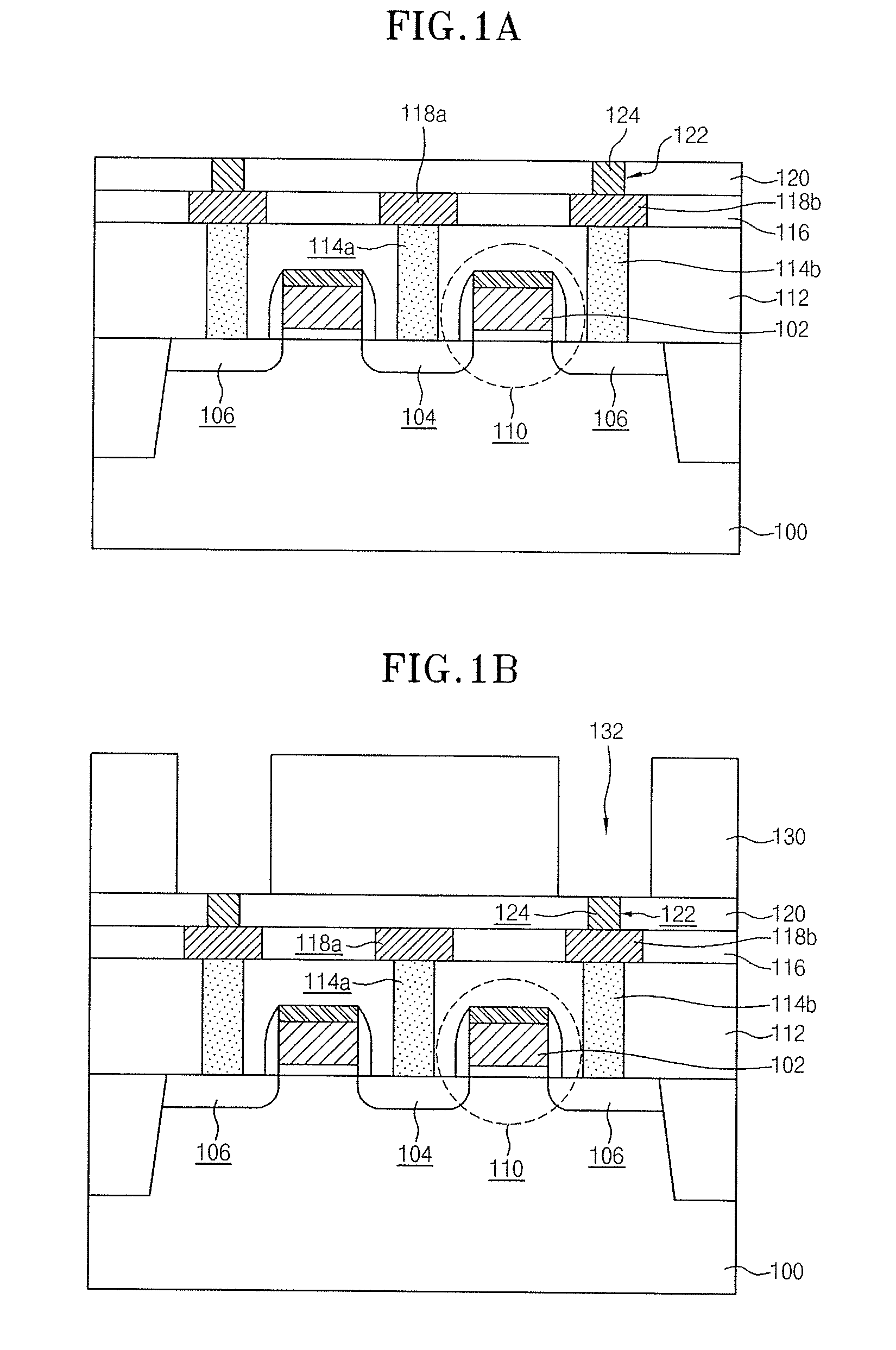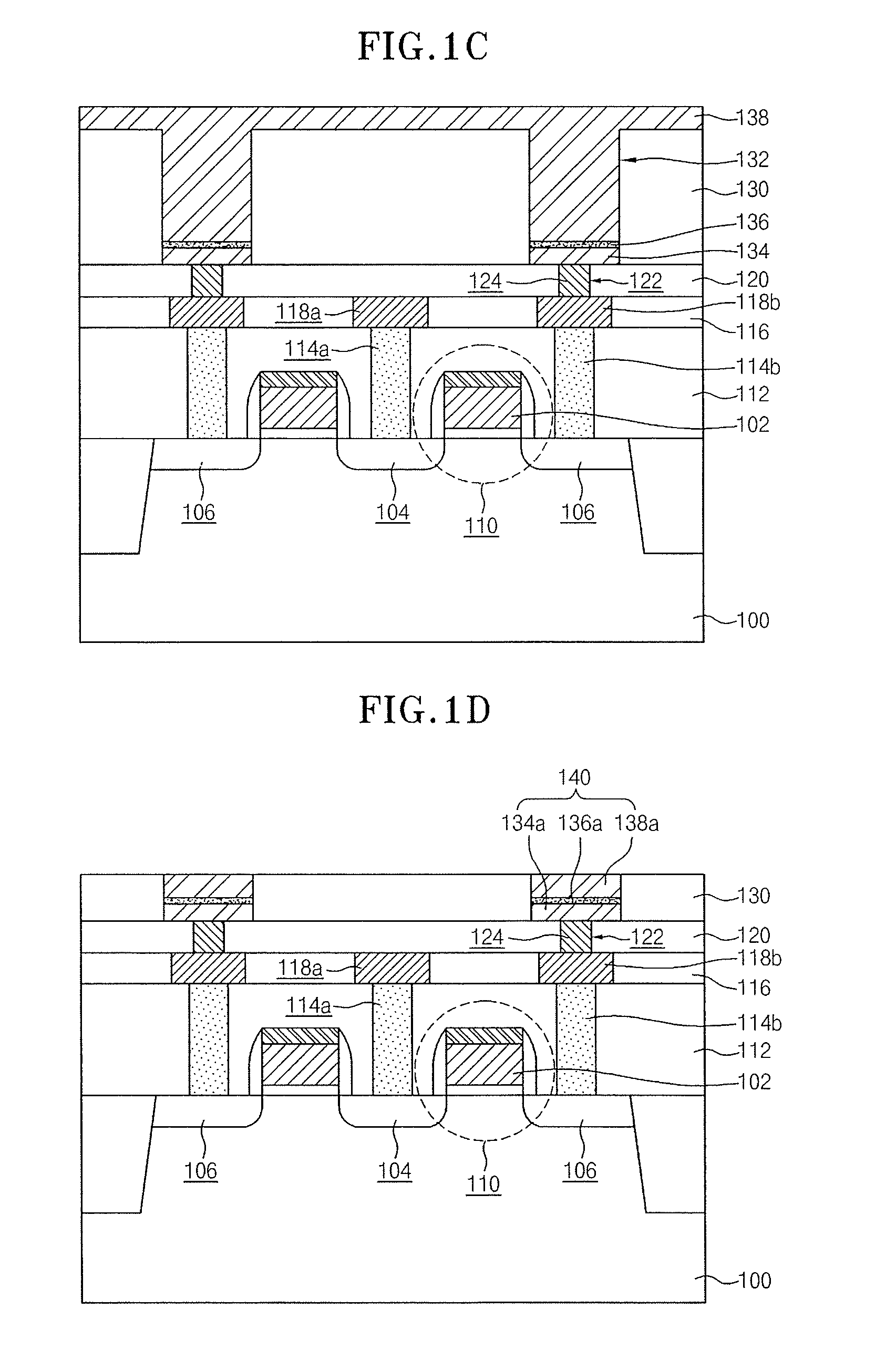Method for manufacturing resistance RAM device
a technology of resistance ram and ram plate, which is applied in the direction of semiconductor devices, basic electric elements, electrical apparatus, etc., can solve the problems of difficult to achieve a high level of integration, and the ideal etching profile is not obtained in the etching process for forming patterns, so as to achieve secure switching characteristics and reduce the size of the reram
- Summary
- Abstract
- Description
- Claims
- Application Information
AI Technical Summary
Benefits of technology
Problems solved by technology
Method used
Image
Examples
Embodiment Construction
[0022]Hereafter, a specific embodiment of the present invention will be described in detail with reference to the accompanying drawings.
[0023]FIGS. 1A through 1E are cross-sectional views shown for illustrating the processes of a method for manufacturing a resistance RAM device in accordance with an embodiment of the present invention. The method will be described below.
[0024]Referring to FIG. 1A, a switching element 110, which comprises a transistor including a gate 102, a source region 104 and a drain region 106, is formed on a semiconductor substrate 100. After forming a first interlayer dielectric 112 on the semiconductor substrate 100 to cover the switching element 110, first and second contact plugs 114a and 114b, which are electrically connected to the source region 104 and the drain region 106, respectively, are formed in the first interlayer dielectric 112 according to a process well known in the art.
[0025]After forming a first insulation layer 116 on the first interlayer d...
PUM
 Login to View More
Login to View More Abstract
Description
Claims
Application Information
 Login to View More
Login to View More - R&D
- Intellectual Property
- Life Sciences
- Materials
- Tech Scout
- Unparalleled Data Quality
- Higher Quality Content
- 60% Fewer Hallucinations
Browse by: Latest US Patents, China's latest patents, Technical Efficacy Thesaurus, Application Domain, Technology Topic, Popular Technical Reports.
© 2025 PatSnap. All rights reserved.Legal|Privacy policy|Modern Slavery Act Transparency Statement|Sitemap|About US| Contact US: help@patsnap.com



